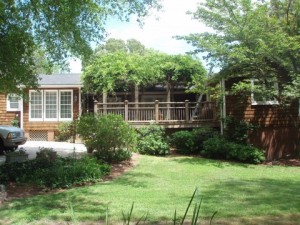
Most of us relegate energy efficiency to the bottom of our home improvement checklist. Practical concerns such as correcting major defects, moving in and settling the kids in school come first. Painting and decorating provide the homeowner with immediate, visible results; a much more tangible reward than sealing attic ductwork with mastic. Does the average $500-1500 per year in energy savings justify the homeowners’ investment of time and money?
Energy, Comfort, and Air Quality
Efficient design and installation provide more than just energy efficiently, they promote comfort and healthier indoor air; the benefits of which are not easily translated into dollars saved. Poor ventilation can lead to headaches, a host of upper respitory problems and premature failure of floor and wall coverings. Uneven heating and cooling make homes less comfortable. Moisture levels above or below optimum lead to discomfort, damage the home and its’ contents and provide an environment for insects, fungus and mold.
Time and Money
Replacing heating and cooling equipment and upgrading windows and exterior doors is costly. In most cases installation is best left to trained technicians and tradesmen. Many other improvements are inexpensive and don’t require technical expertise. Efficiency can be improved over time; each project may be small but the cumulative effects will result in savings and comfort over the life of the home.
New and Older Homes
Prior to WWII plank or board construction was most common. Homes were not air conditioned.. In the South homes were designed to provide as much relief possible from our hot, humid summers.
In the 1950’s panel construction typified by 4’x8′ plywood was introduced. Window air conditioning became commonplace. High ceilings were lowered to 8′, to reduce the volume of conditioned space, construction costs and to fit the modular pattern of panel construction.
By the mid 1970’s the use of plywood and gypsum (exterior sheathing and drywall) panel products were widespread. Central heating/cooling and wall/ceiling insulation were standard.
In 1993 the Model Energy Code was passed. It set new standards for equipment and provided prescriptive standards for sealing and insulating homes.
In general older homes need the conditioned space (building envelope) sealed to prevent infiltration/exfiltration more than newer homes.
Newer homes tend to suffer more from poor energy design and installation. Equipment and duct systems may not be sized and installed properly. Vaulted ceilings, extensive glazing, and limited protection of the exterior walls by roof projections or shade trees tend to increase energy use.
BUILDING A HOUSE
In his book “How Buildings Work” Edward Allen describes the building blocks of architecture. These are: THE SITE, THE ENCLOSURE, and THE ACTIVE MECHANISMS.
How the house is located with respect to the terrain and vegetation, the composition and construction of the building shell, and the use of Heating and Cooling, Plumbing, and Electric systems affect energy use.
THE BASICS
Energy Movement
Understanding how energy moves through a house is essential if we are to manage it. There are three basic ways for heat to be transferred:
- Radiation: Straight-line passage of heat from a warmer to cooler object through air or space. An oven broiler works by radiating heat.
- Conduction: Heat gain or loss through a solid material. Heat a pot of water and you get hot water. The pot conducts heat to the water.
- Convection: Transfer of heat by means of a moving stream of air or water. An oven, especially one equipped with a convection fan, heats the air in the oven, which in turn heats the food.
Pressure
Wind is produced when air flows from an area of high to an area of low pressure.
Convective ventilation occurs when differences in pressure are created by the differences in the density between warmer and cooler air.
The movement of air, and the moisture contained in air, through the building shell/enclosure/envelope can be beneficial or detrimental to the buildings occupants. Unwanted heat gain and loss due to differences in pressure can be limited by sealing the building shell and ductwork.
The forced air heating and cooling systems prevalent in the metro Atlanta region use pressure to work. Conditioned air is moved (forced) by creating positive (supply) and negative (return) pressure with a blower and ductwork.
Residential energy use and indoor air quality – save money by wasting less energy. Dan can show you how.

